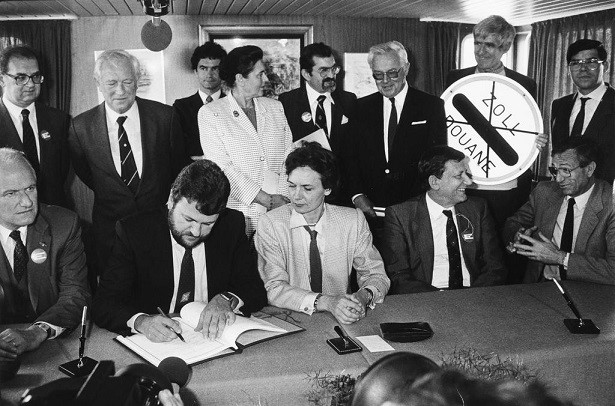
Oct. 31, 2018, 10:42 a.m.
SCHENGEN
What is the Benelux?
Benelux is a geographical region formed by three bordering nations joining together for political and geographical cooperation and creating a common space. The name Benelux is formed by the assembly of the initials of the three countries in their own language. (Belgium, Netherlands, and Luxembourg)

Source: https://www.reddit.com/r/vexillology/comments/5lxkeg/austrohungarianized_benelux_flag
We can see that many countries in the world have cooperated with political, commercial, or social motivations, as in the Benelux case, and removed some boundaries between them. The Schengen Region, formed by the Schengen Agreement, which contributes to the positive development of the European Union and social integration today, is an example of this cooperation model.

However, the Schengen Region is not a right that is limited to the European Union and is not directly earned by membership of the European Union. The Schengen Region and the European Union should not be confused.
Any state that has earned membership status in the European Union today is not directly involved in the field of Schengen. Any state that meets the conditions for full membership status must also be adequately qualified to participate in the Schengen Region. Just as other countries that are not members of the European Union but have joined this free movement area also provide the conditions for acceptance. (Switzerland, Norway, Iceland, Liechtenstein)
The Schengen Treaty and the right of free circulation provided by this treaty date back to 1985. In 1985, five European Community member states (France, Germany, Belgium, the Netherlands, and Luxembourg) took the first step to remove the internal border controls regularly and safely and signed the Schengen Agreement. The area created by this first agreement was gradually enlarged with the participation of other countries and formed the present Schengen District. The Schengen Convention was included in the 1999 Amsterdam Treaty on the primary sources of European Union law.

Source: https://www.schengenvisainfo.com/schengen-agreement/
Today, there are 26 member countries of the Schengen Region, and only 4 of these countries are not members of the European Union. There are also two countries that are members of the European Union but are not members of the Schengen Region: the United Kingdom and Ireland.
Countries Included in Schengen Area:
• Belgium
• Austria
• Czech Republic
• Denmark
• Estonia
• Finland
• France
•Germany
• Greece
• Hungary
• Iceland
• Italy
• Latvia
• Lithuania
• Luxembourg
• Malta
• Netherlands
• Norway
•Poland
• Portugal
• Slovakia
• Slovenia
• Spain
• Sweden
• Swiss
• Liechtenstein
For more information, please see: https://www.schengenvisainfo.com/schengen-visa-countries-list/
For more information, see: https://www.avrupa.info.tr/en/schengen-area-602
* For more information about the European Union, you can watch the animation which was prepared within the framework of Jean Monnet Enhancing Learning EU at School: A follow up Project for Digital European Union.
Animation: What is the European Union?

